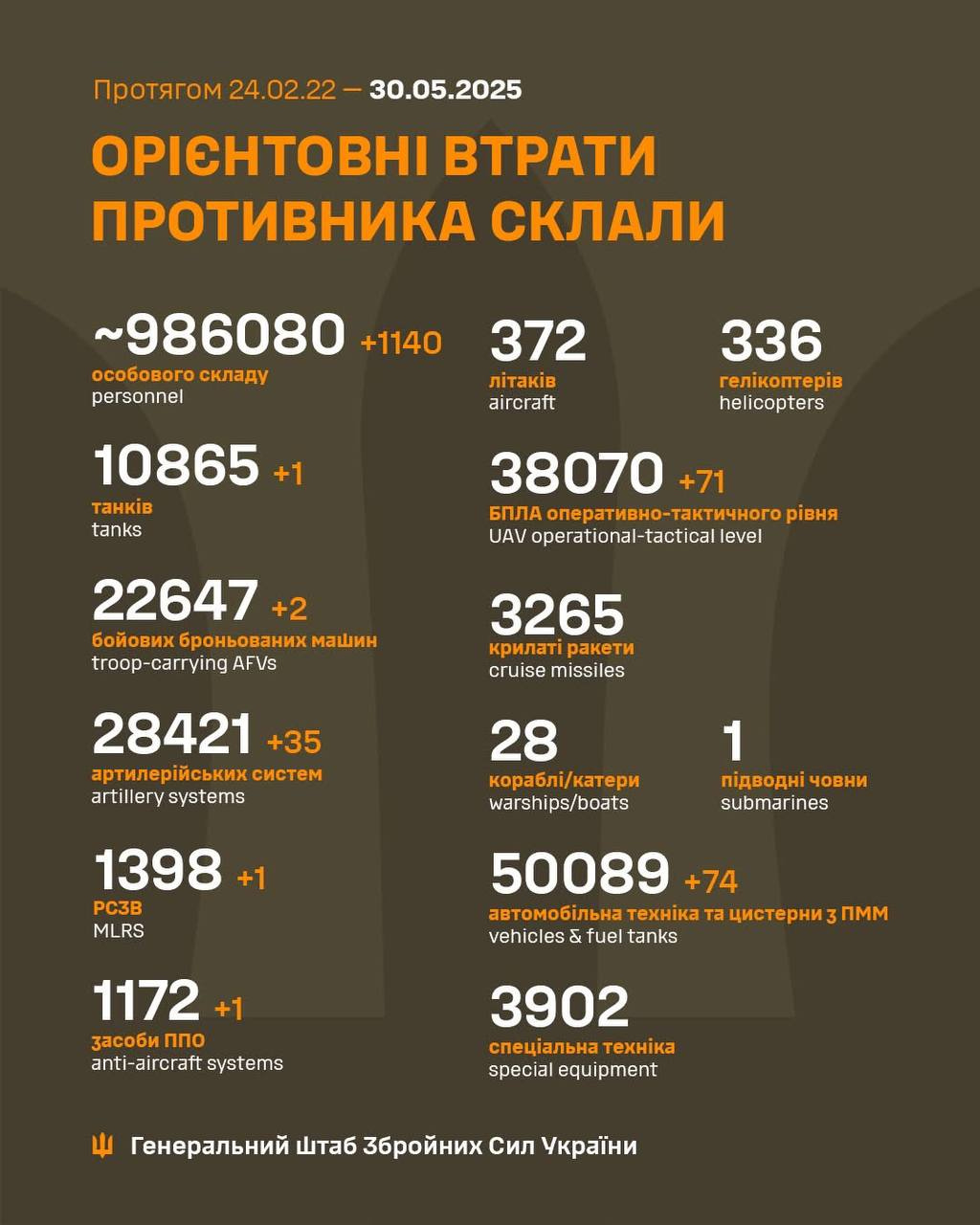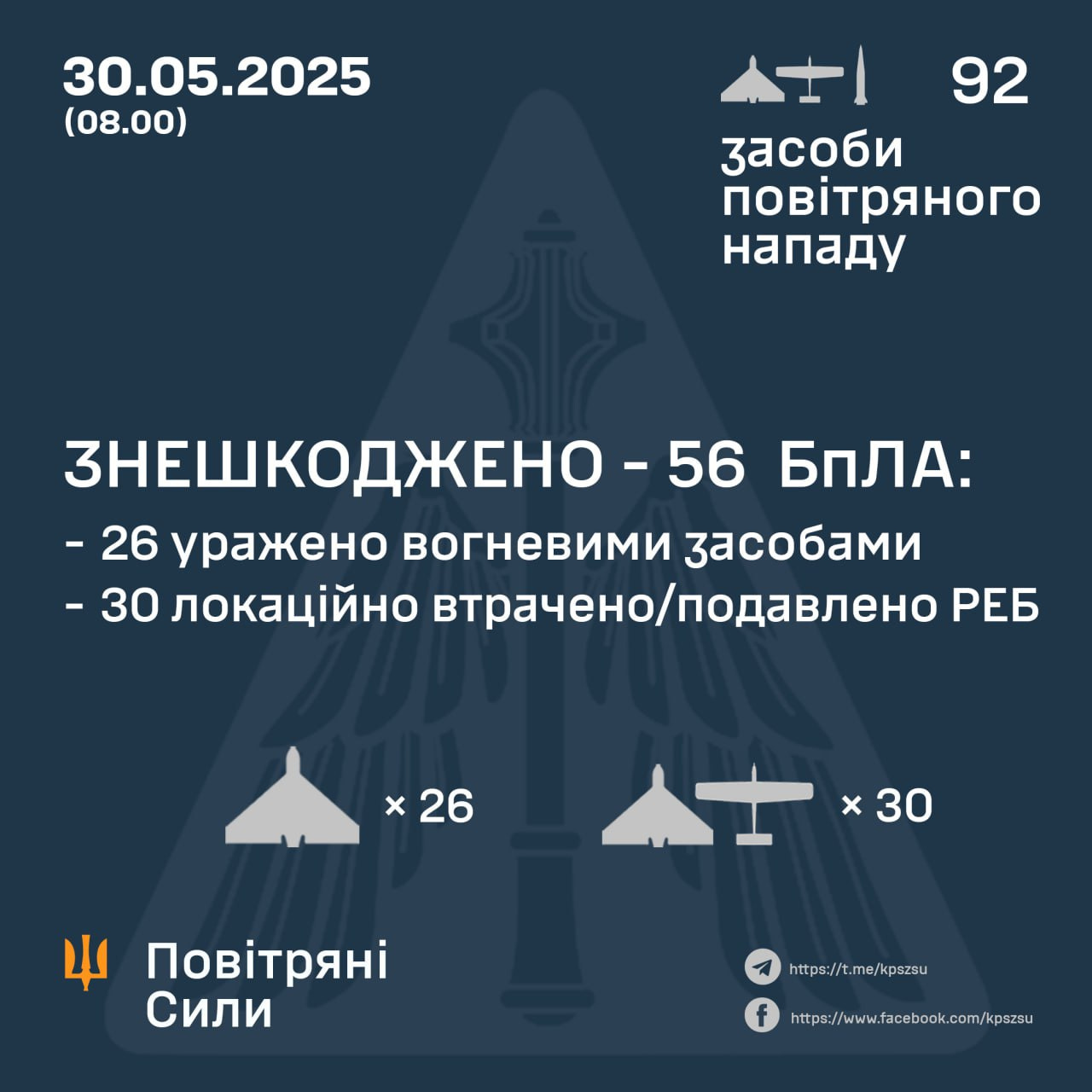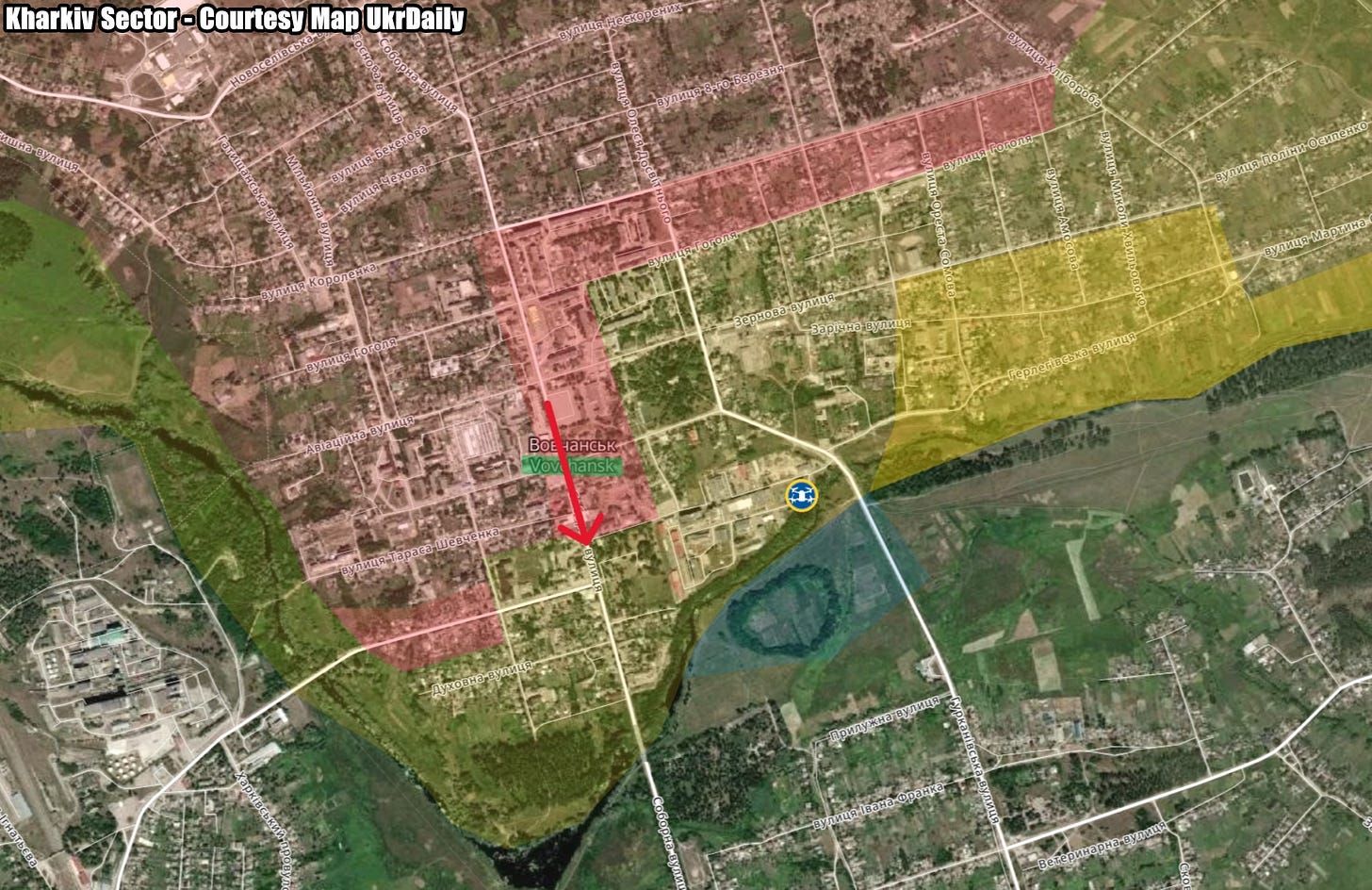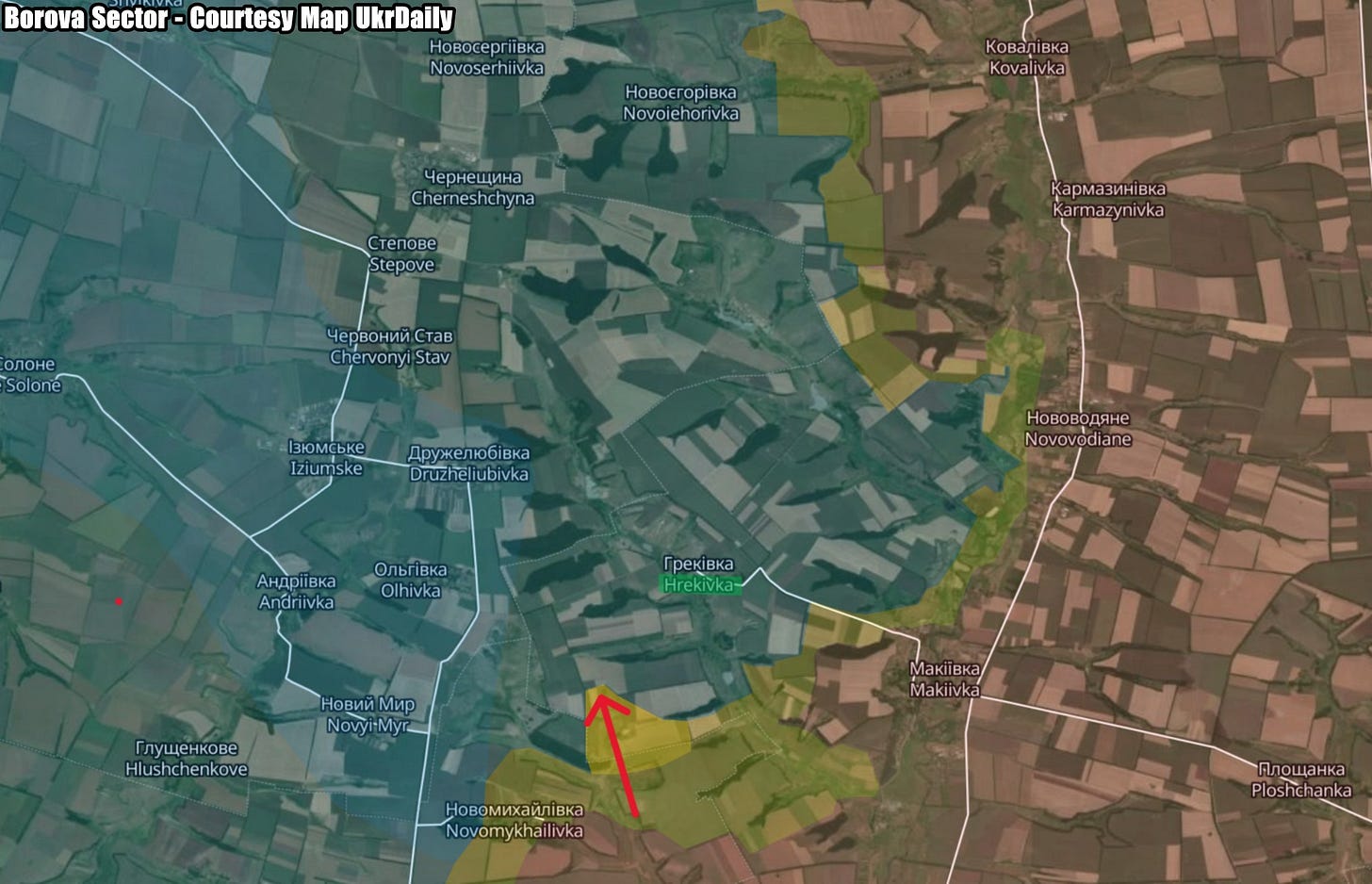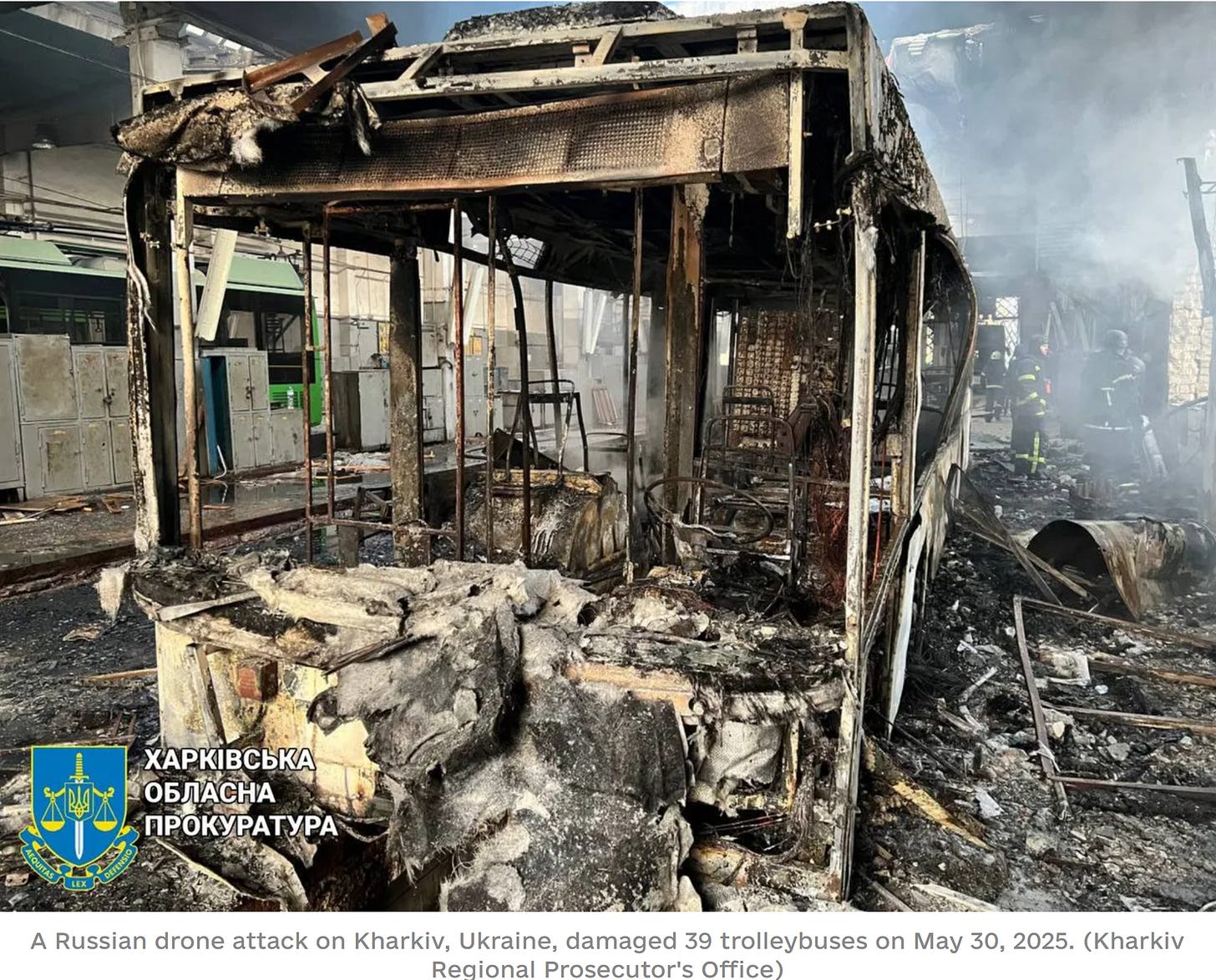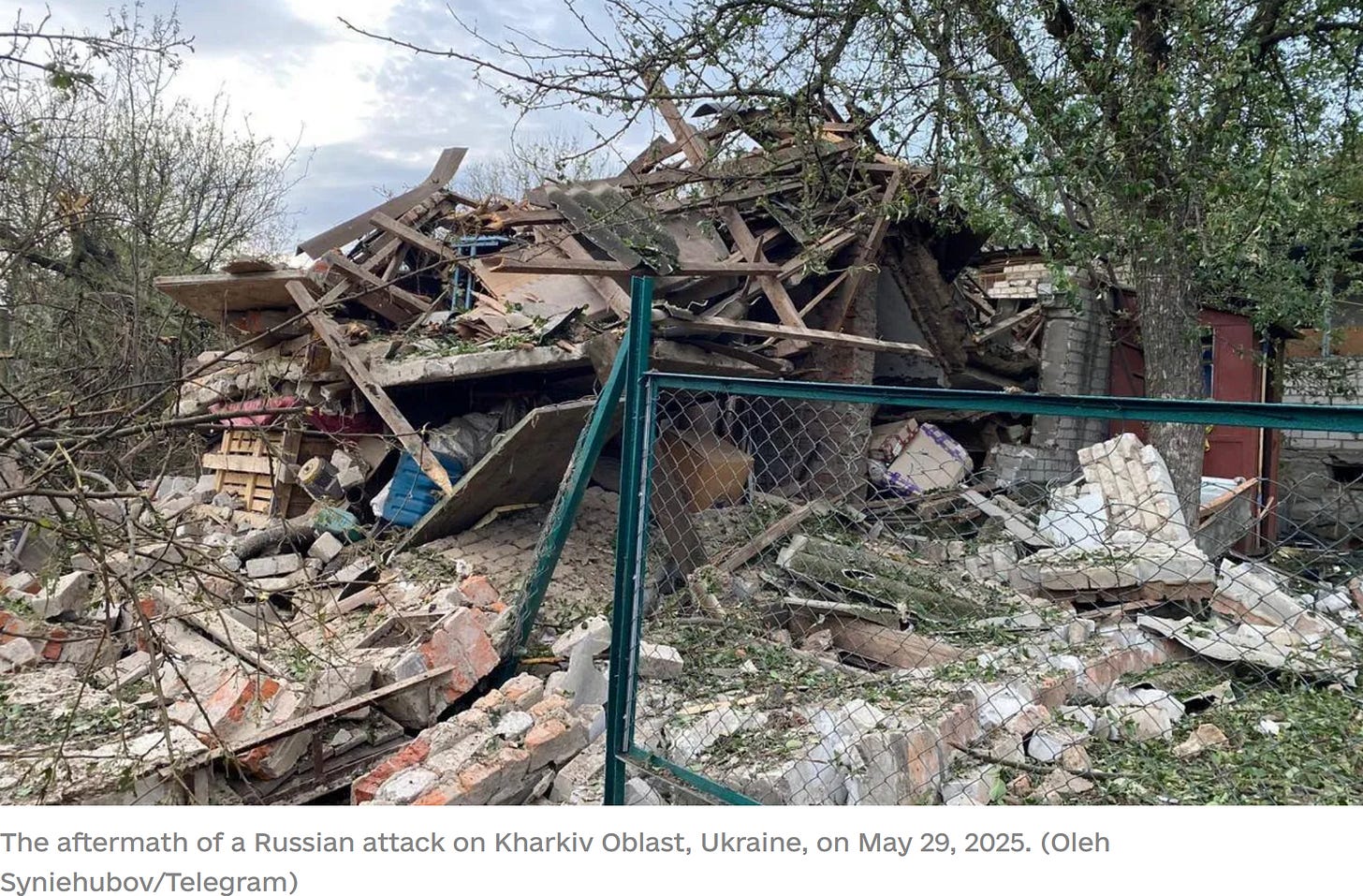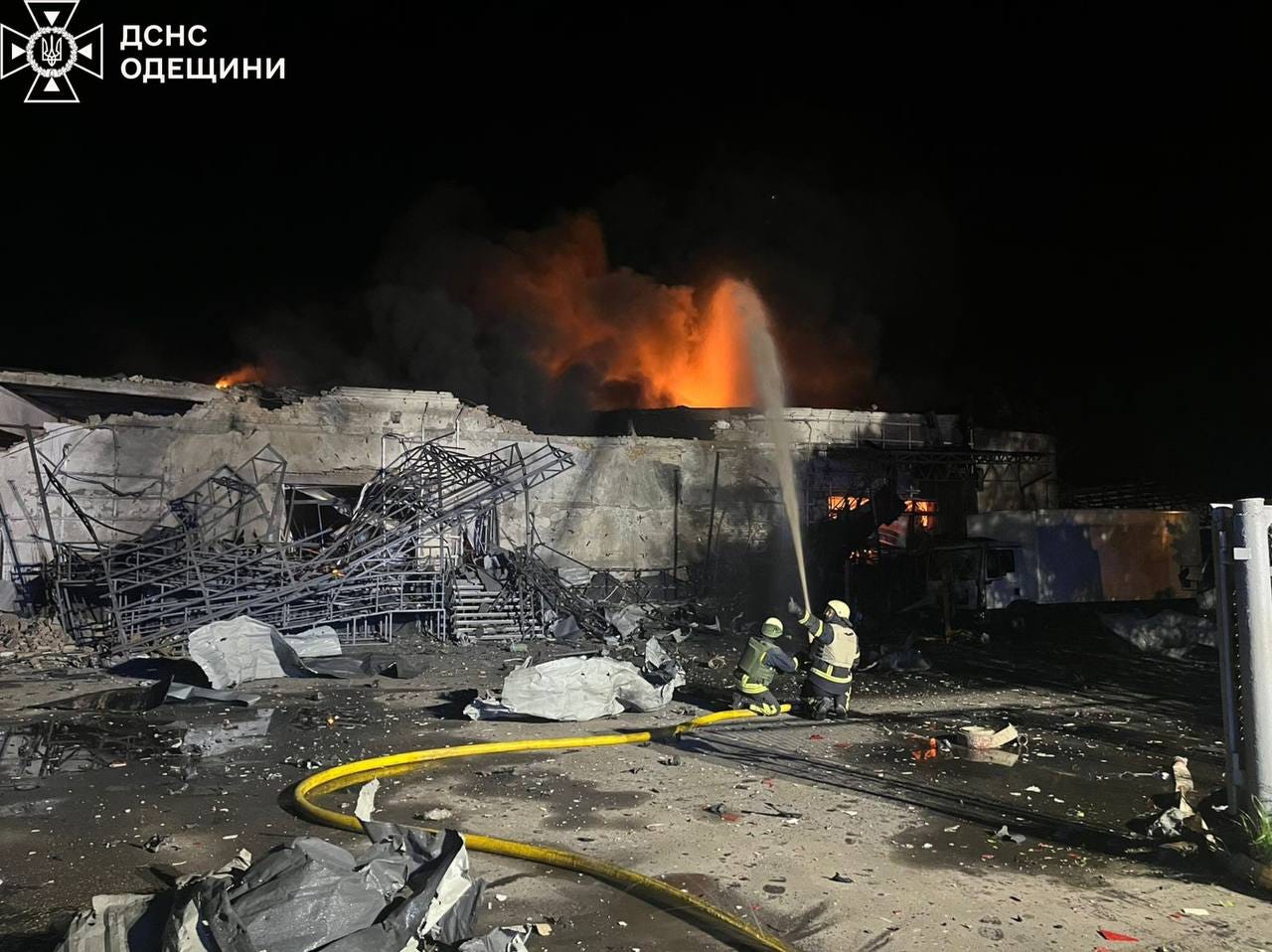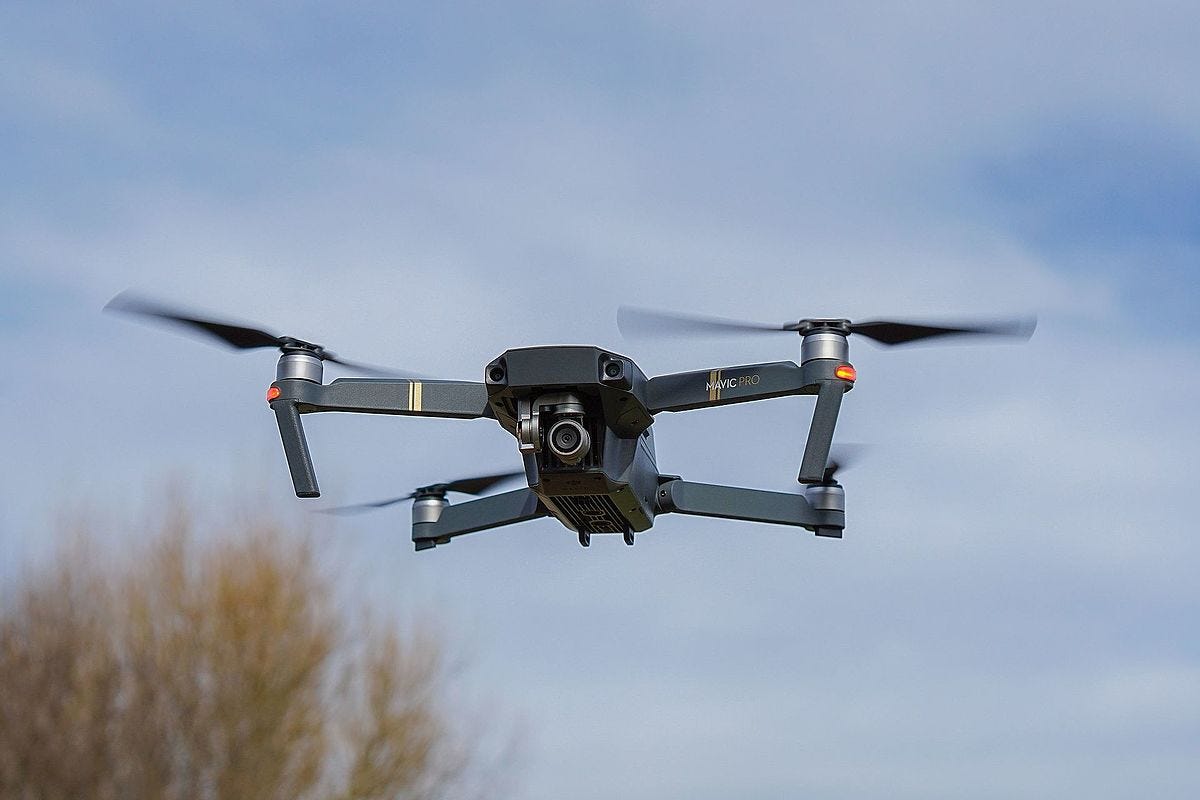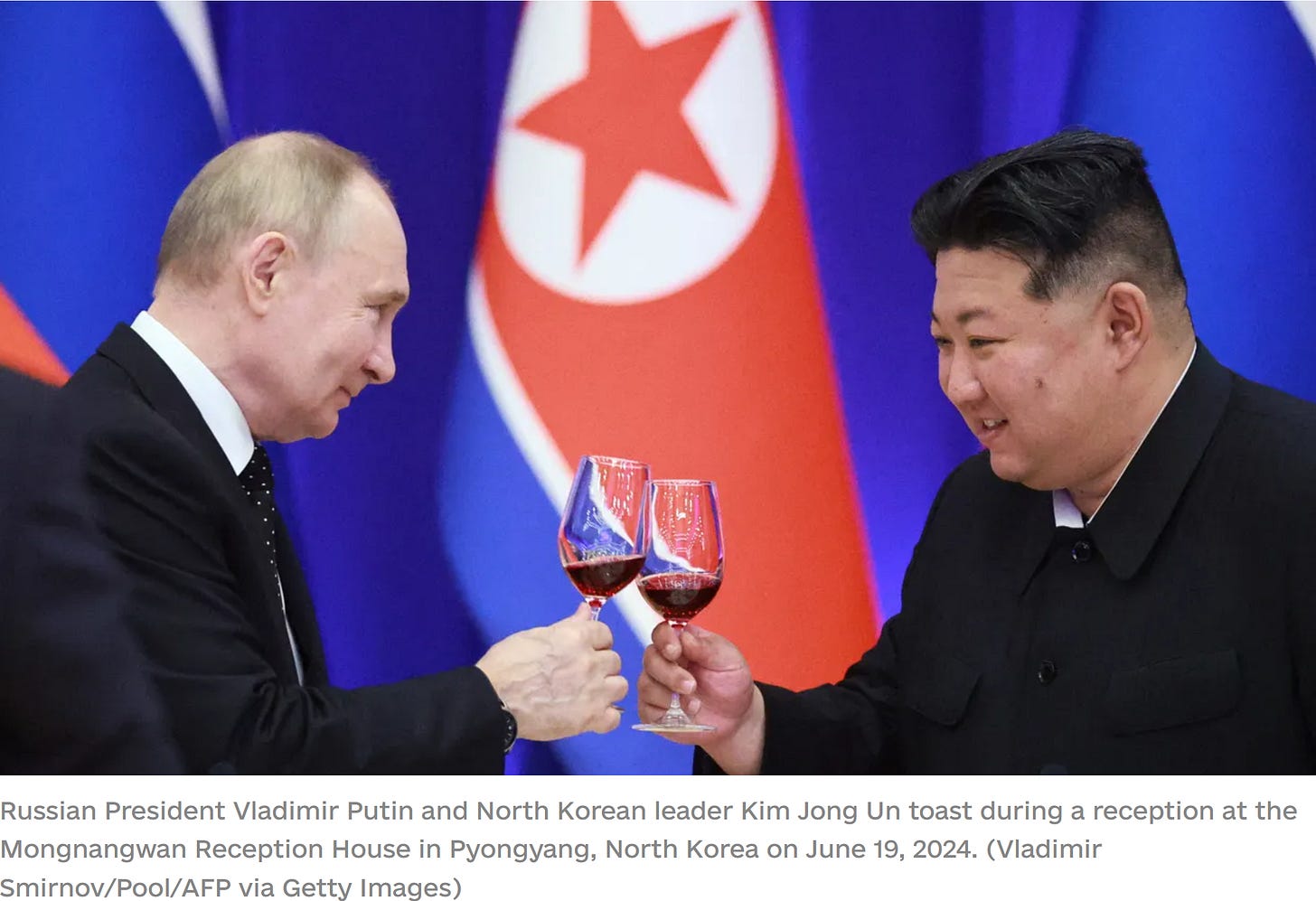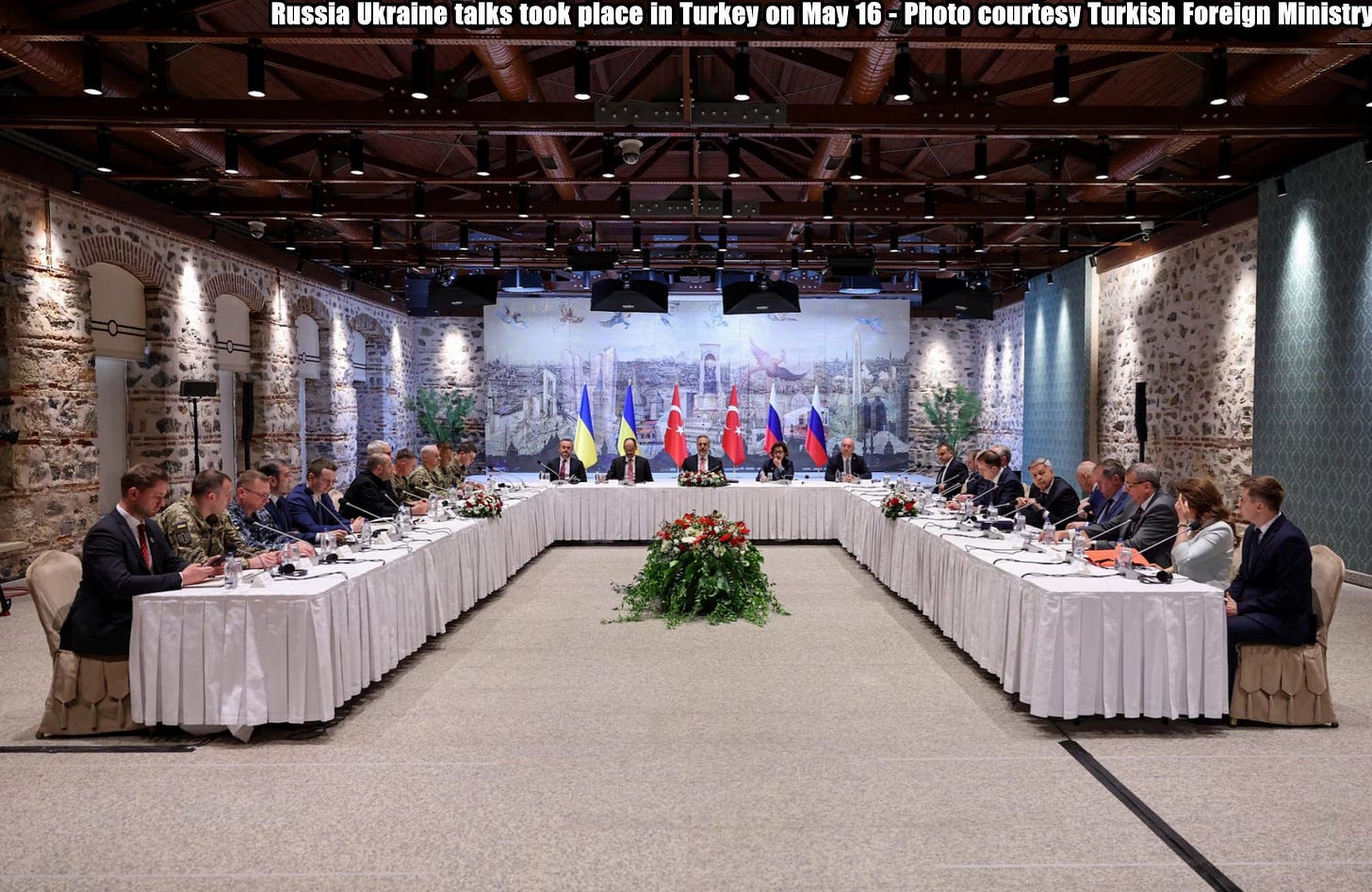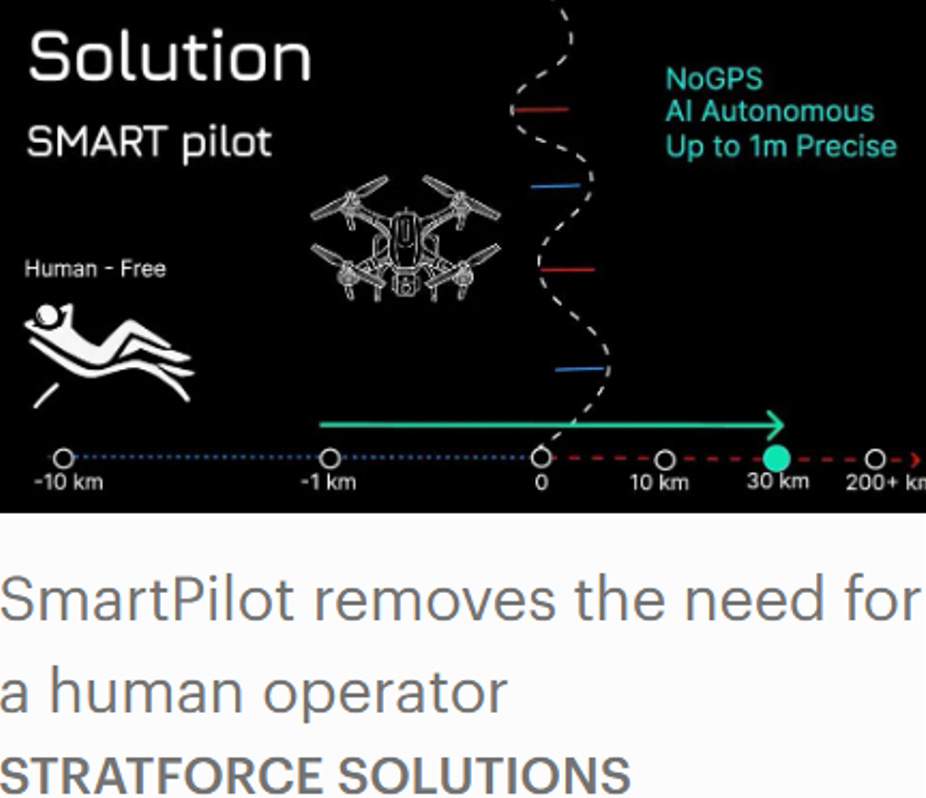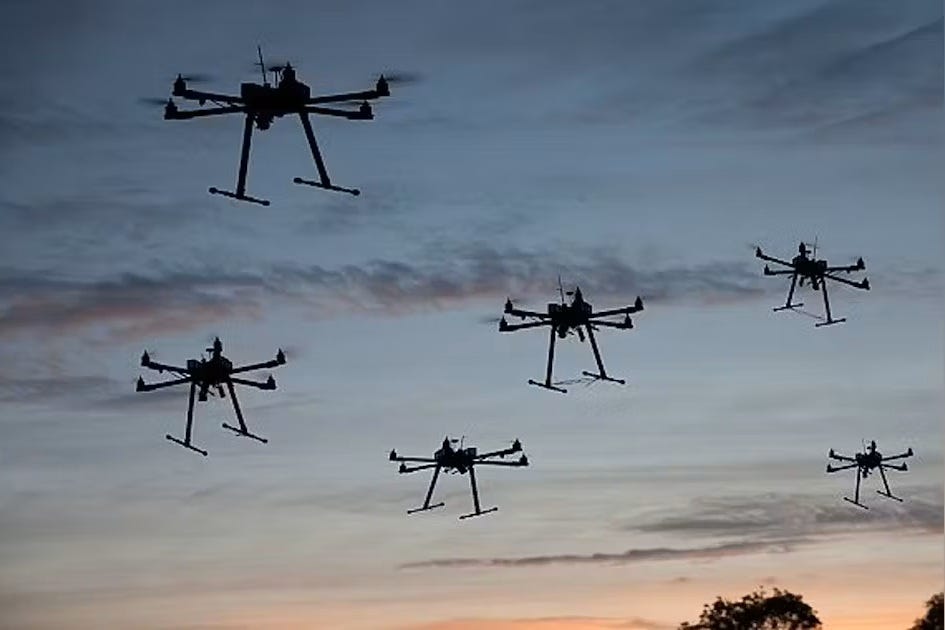Slava Ukraini! In early 2022 I began a Telegram channel aggregating news from a number of sources daily on the war in Ukraine. In June 2023 I began providing a daily draft for the Ukraine War Brief Podcast collecting news from over 70 sources daily, which formed the basis of the script. While the Podcast no longer exists I have continued to make this Brief available for my followers here on Substack for those who wish to keep up with the news from the war.
If you find the Brief informative I would appreciate it if you shared it with others.
All the latest news on the Russo-Ukraine War 6 days per week
ALONG THE CONTACT LINE
GSAFU Morning Report
For: May 30. 2025
The General Staff of the Armed Forces of Ukraine in its Operational Information update at 08:00 on May 30 stated that day 1192 of the full-scale invasion of the Russian Federation against Ukraine had begun.
The situation on the line of combat remains tense in some sectors. Ukrainian defenders continue to actively counteract the Russian aggressor, causing them significant losses in personnel, equipment and technology. Exhausting the enemy along the entire front line and continuing to disrupt the plans of Russian occupiers to advance deeper into the territory of Ukraine.
During the past day, 173 combat engagements took place.
Over the past 24 hours, the enemy carried out 2 missile strikes, 81 air strikes, used 2,942 attack drones and fired approximately 5,900 artillery shells across the positions of Ukrainian forces and civilians.
Air Force Daily Report
56 ENEMY UAVS DESTROYED
➖➖➖➖➖➖➖➖➖
On the night of May 30 (from 22:50 on May 29), the enemy attacked with 90 Shahed attack UAVs and simulator drones of various types from the directions: Millerovo, Orel, Shatalovo, Kursk, Primorsko-Akhtarsk - Russia, and also struck with two Iskander-M/KN-23 ballistic missiles from the Voronezh region - Russia.
The main areas of the air strike are Kharkiv, Odessa and Donetsk regions.
The air attack was repelled by aviation, anti-aircraft missile troops, electronic warfare and unmanned systems units, and mobile fire groups of the Defense Forces of Ukraine.
As of 08:00, air defenses had neutralized 56 enemy Shahed UAVs (and other types of UAVs) in the east, south, and north of the country. 26 were shot down by fire weapons, 30 were lost/suppressed by electronic warfare.
Enemy airstrikes were recorded in 12 locations.
Combat Operations in the Russian Federation
There have been no major changes to the combat environment since our last report.
The Khortytsia operational-strategic group
(Responsible for the northeastern part of Ukraine. )
Sumy Sector: Russian forces recently advanced in Sumy Oblast.
Ukrainian military observer Kostyantyn Mashovets reported on May 29 that Russian forces seized Kostyantynivka and Volodymyrivka (both north of Sumy City).
Kharkiv Sector: Russian forces recently advanced in northern Kharkiv Oblast.
Geolocated footage published on May 29 indicates that Russian forces recently advanced along Zernova Street in northern Vovchansk (northeast of Kharkiv City)
Kupyansk Sector: Russian forces recently advanced in the Kupyansk direction.
Geolocated footage published on May 29 shows Russian forces raising a flag in the southwestern outskirts of Stroivka (northeast of Kupyansk along the international border), indicating that Russian forces likely seized the settlement.
Borova Sector: Russian forces recently advanced in the Borova direction.
Geolocated footage published on May 28 indicates that Russian forces recently marginally advanced southwest of Hrekivka (southeast of Borova).
The Tavria operational-strategic group
(Responsible for the central-eastern and southeastern part of Ukraine.)
Pokrovsk Sector : Russian forces recently advanced in the Pokrovsk direction.
Geolocated footage published on May 28 indicates that Russian forces recently advanced in northeastern Lysivka (southeast of Pokrovsk).
Kurakhove Sector: Ukrainian forces recently advanced in the Kurakhove direction.
Geolocated footage published on May 24 indicates that Ukrainian forces recently advanced in northeastern Bahatyr (west of Kurakhove).
The Odesa operational-strategic group
(Responsible for Kherson, Qırım, (also known as Crimea) and the Black Sea.)
There have been no major changes to the combat environment since our last report.
TEMPORARILY OCCUPIED TERRITORIES
Nothing major to report.
THE HOME FRONT
Russian attacks against Ukraine kill 7, injure 39 over past day.
Russian attacks against Ukraine killed seven people and injured 39 others over the past day, the Kyiv Independent reported citing regional authorities on May 30.
A Russian drone attack on the city of Kharkiv injured two women aged 61 and an 84-year-old woman, Governor Oleh Syniehubov said. The attack also damaged 39 trolleybuses.
Nine more people, including two children, were injured in a Russian attack on the village of Vasyliv Khutir in Kharkiv Oblast, according to Syniehubov.
Russian attacks near Polohy and Vasylivka in Zaporizhzhia Oblast killed two people and injured five other people, Governor Ivan Fedorov reported.
Dnipropetrovsk Oblast Governor Serhii Lysak said that Russian forces attacked the Nikopol district in the region, injuring a man and a woman aged 25 and 48.
One person was killed in Kostiantynivka in Donetsk Oblast, Governor Vadym Filashkin said. Ten other people suffered injuries in the region over the past day.
In Kherson Oblast, Russian forces targeted 35 settlements, including the regional center of Kherson. Four people were killed, and 11 others injured, Governor Oleksandr Prokudin reported.
RUSSIAN WORLD
Explosions Rock Site of Russian Navy Drills in Far East.
At least two powerful explosions rocked an area used for Russian Navy drills in the Far East Primorye region, the Moscow Times reported citing the local branch of Russia's National Antiterrorism Committee (NAC) on Friday.
The blasts occurred early in the morning in Desantnaya Bay, located around 12 kilometers (7.5 miles) east of the regional capital Vladivostok, the NAC said. Authorities reported no casualties or damage.
“The threat has been neutralized by law enforcement agencies,” the NAC said in a statement, without providing further details.
Later, the agency claimed the explosions were caused by the ignition of propane cylinders inside a vehicle at the bay.
Local media shared video footage showing two trucks transporting passenger vehicles covered in tarps away from the scene.
The incident occurred less than two weeks after the Russian Navy’s Pacific Fleet conducted amphibious assault drills in the area involving 300 troops. Similar exercises were held at the bay in February.
Access to Desantnaya Bay, which translates to “Landing Bay” in Russian, is closed to civilians, according to the RBC news website.
RELATED INTERNATIONAL NEWS
China increases drone deliveries to Russia while limiting sales to western buyers.
The Institute for the Study of War (ISW), a US based think tank, in its May 29 Russian Offensive Campaign Assessment reported that Western reporting indicates that the People's Republic of China (PRC) is increasing drone deliveries to Russia while reducing sales to Ukrainian and Western buyers, further demonstrating China's increasingly overt support for Russia's war effort in Ukraine.
Bloomberg reported on May 29 that Ukrainian President Volodymyr Zelenskyy recently stated that the PRC stopped selling DJI Mavic quadcopter drones, which Russian and Ukrainian forces have used for surveillance and strike missions, to Ukraine and other European countries while continuing to sell the quadcopters to Russia.
Zelenskyy stated that Russia has domestic DJI Mavic production lines, and that "Chinese representatives" are present at these production facilities. An unnamed European official told Bloomberg that Zelenskyy's statements are consistent with European assessments and stated that the PRC appears to have reduced deliveries of some drone components to Western buyers while simultaneously increasing deliveries to Russia.
ISW has observed recent reporting that Russian forces are fielding Chinese-made equipment, that the PRC is likely aware of and choosing not to stop Russian military recruitment efforts of PRC citizens, and that Russia has established joint production lines with PRC manufacturers for Shahed-like long range strike drones, underscoring the extent of the PRC's support for Russia's war effort.
Russia received at least 100 ballistic missiles from North Korea in 2024.
Russia and North Korea have engaged in "unlawful military cooperation," including arms transfers of up to 9 million shells and "at least 100 ballistic missiles" in 2024, according to a report by the Multilateral Sanctions Monitoring Team (MSMT) published May 29.
The MSMT is made up of 11 United Nations member states and was formed in October 2024 to monitor and report on the implementation of UN sanctions against North Korea in light of deepening military ties between Moscow and Pyongyang.
The watchdog's first report presents evidence that North Korea and Russia violated United Nations Security Council resolutions (UNSCRs) and engaged in illegal activities throughout 2024.
Violations include deliveries of weapons and military equipment, Russian training of North Korean troops for deployment in direct combat against Ukrainian forces, supply of refined petroleum products to North Korea above UN-mandated caps, and correspondent banking between the two countries.
In 2024 alone, North Korea sent Russia at least 100 ballistic missiles, an MSMT participating state found. These missiles "were subsequently launched into Ukraine to destroy civilian infrastructure and terrorize populated areas such as Kyiv and Zaporizhzhia," the report said.
Ukraine ready for second round of Istanbul talks but seeks Russian draft memo in advance.
Ukraine is ready to attend the second round of peace talks with the Russian delegation in Istanbul on June 2, but seeks to receive a draft of Russia’s proposed ceasefire memorandum before the meeting,the Kyiv Independent reported citing Presidential Office Chief of Staff Andriy Yermak on May 29.
Ukraine and Russia held peace talks in Istanbul on May 16, where both sides agreed to a 1,000-for-1,000 prisoner exchange. The peace negotiations were largely inconclusive, with Moscow reiterating maximalist demands and sending a delegation of lower-level officials.
Moscow has proposed June 2 as the date for the next round of talks with Ukraine, despite escalating its attacks on the country.
Russian Foreign Minister Sergey Lavrov said on May 29 that the Russian delegation, led by presidential aide Vladimir Medinsky, is prepared to present the memorandum to the Ukrainian side and provide necessary clarifications during the next Istanbul meeting.
Kyiv insists on receiving the memorandum ahead of the new round of talks in order to understand Russia’s proposed steps toward a ceasefire. Ukraine has already submitted its own document to the Russian side.
"Ukraine is ready to attend the next meeting, but we want to engage in a constructive discussion. This means it is important to receive Russia’s draft. There is enough time – four days are sufficient for preparing and sending the documents," Yermak said during a conversation with advisors to the leaders of the U.K., Germany, France, and Italy.
Security advisors from the four countries are expected to attend the second round of peace talks in Istanbul, U.S. President Donald Trump's Special Envoy Keith Kellogg said.
Russia vowed to present its peace memorandum but has yet to deliver, drawing rebuke from Ukrainian, European, and U.S. officials. Trump has also repeatedly signaled he would exit the peace efforts unless progress is achieved soon.
Reuters reported that Putin's conditions for ending Russia's war against Ukraine include a written pledge by NATO not to accept more Eastern European members, lifting of some sanctions, and Ukraine's neutral status, among other demands.
MILITARY & TECH
Ukraine Drone Carriers Launch First Long-Range Autonomous Strikes.
Ukrainian startup Strategy Force Solutions claim their drone motherships have carried out the first autonomous missions with attack drones in trials against Russian targets, Forbes reported on May 26.
“A $10,000 mission replaces what previously required $3-$5 million missile systems,” CTO Andrii (surname withheld), told me.
The StratForce approach has a reusable GOGOL-M mothership delivering two FPV-type attack drones to hit precision targets up to 300 kilometers away. This approach leverages the ability of small drones to have big effects on vulnerable targets such as parked aircraft, air defence sites or infrastructure.
Andrii says they cannot yet release imagery of the attacks which cannot be verified. However the work is a straightforward progression of previously seen Ukrainian drone motherships and FPVs with AI-enabled automated targeting. In fact, it might be seen as an operational version of the autonomous long range attack system which the Pentagon’s DIU is currently racing to build, or the CGI swarm mothership recently shown off by China.
“By pairing them [small FPV type drones] with AI mothership drones, we can guarantee precision strikes,” says Andrii.
Andrii began developing this idea with drones prewar intended for automated infrastructure inspection. A smart drone flies along power lines or oil pipelines and, where it sees a possible problem, drops lower and takes detailed images. On return the drone uploads data of possible issues with exact locations, so the maintainers decide whether they need to send an engineer to take action.
Andrii’s work on infrastructure inspection was interrupted by Russia’s full-scale invasion in 2022. He turned his project on AI drones towards defending Ukraine.
StratForce’s key product is a SmartPilot system which uses a combination of advanced sensors and AI. The roots in infrastructure inspection are clear. While other developers use basic drone cameras, the requirement for high precision calls for something more sophisticated.
“In some ways it is like a self-driving car,” says Andrii. “In order for the autopilot to work properly they need a lot of cameras. There are not so many obstacles in the air, but we he system as to be lightweight. That’s how we arrived at our system of cameras, LIDAR and communication to allow the AI to navigate, coordinate and maneuver around obstacles.”
LIDAR, effectively laser radar, builds up a 3D map of the surroundings, and works in all lighting and weather conditions. SmartPilot’s other main feature is AI which combines the inputs from multiple sensors.
“Smart Pilot uses a multi-sensor fusion approach, combining data for environment perception and target recognition,” says Andrii.
This world picture enables the AI to make decisions, plot a flight path and carry out the mission just like a human pilot.
“With SmartPilot it was a really serious challenge how to imitate a flight of the drone the way it would be remotely controlled by a pilot,” says Andrii. “How to maneuver around obstacles, with the limitations of the processor and in real time.”
Andrii says SmartPilot can carry out missions autonomously, finding its way to a specified location and engaging targets there.
“It enables autonomous flight, navigation, and engagement without GPS and without constant operator control,” says Andrii.
In a typical application, the GOGOL-M mothership with a 20-foot wingspan flies to the target area and releases two
FPV-type drones. Each of these has its own lightweight version of SmartPilot. The mothership returns, leaving to FPV drones to find, identify and carry out attacks on predefined targets such as air bases, missile launch sites or air defence.
Andrii notes that the system is also effective against vulnerable infrastructure such as oil storage, power distribution and railways.
While a drone like the Shahed with its single warhead can only hit one target, the mothership can hit multiple targets, then return for re-use.
Unlike the Shaheds, SmartPilot is not limited to static targets.
“It supports ambush missions, landing and waiting for targets, and autonomous search in real time,” says Andrii.
The drones can land and wait at an airbase for aircraft to arrive or emerge from their hardened shelters. Or they can be left in the path of a convoy, ready to attack autonomously when it appears, a tactic already widely used.
Andrii says StatForce can currently produce 50 GOLGOL-M mothership drones per month and 400 of the FPV type attack drones, but this will depend on getting contracts from the military.
So far, the feedback from trial missions has been positive.
“It feels like a video game. I just set the waypoints, choose the targets, and watch it work,” says one user quoted by Andrii.
“It's fascinating to watch from the coordination center. I just wish we could increase the warhead and push the range to 500 kilometres,” says another.
The important element of StratForce’s solution is the software. The drones, both motherships and FPV attackers, can be of any size, shape or configuration. If users want a large, jet-powered mothership like China’s SS-UAV, or bigger, fixed-wing attack drones, or even robot boats or tanks carrying drones, these could be accommodated.
The crucial first step, long-range delivery of multiple small autonomous attack drones, has now been taken. We do not yet know how effective this Version 1.0 is, or its limitations. But it is likely to give Russia some serious problems in the coming months.
Syrskyi - Over 89,000 Russian targets struck in May using drones.
Ukrainian soldiers hit and destroyed in May more than 89,000 Russian targets using drones of various types, Commander-in-Chief Oleksandr Syrskyi said, the Kyiv Independent reported on May 30.
Syrskyi did not specify which targets were hit. Throughout Russia's all-out war, Ukrainian drones have been used to target Russian vehicles, troops, as well as fortified positions
Ukraine has pioneered drone technology during Russia's full-scale war, introducing various ground-, air-, and sea-based models for combat and reconnaissance missions.
According to Syrskyi, Russia is adopting Ukraine’s drone warfare tactics and expanding its use of unmanned units.
During the meeting with Ukrainian commanders, intelligence briefed Syrskyi that the Russian army had received new types of drones and ground-based robotic systems. In response, Ukraine is ramping up the number of drone crews and advancing its own unmanned capabilities, Syrskyi said.
"Each drone means a destroyed enemy, and therefore a saved life of a Ukrainian serviceman. A special emphasis is placed on the destruction of enemy UAV (unmanned aerial vehicles) operators and their command centers," the commander added.
Ukraine is working to scale up domestic production. Kyiv has also developed long-range missile-drone hybrids, including the Palianytsia and Peklo models, which use turbojet engines as cruise missile alternatives.
Ukraine’s Own Anti-drone Gun Is Now Officially in Service.
The Ukrainian Ministry of Defense has greenlit a compact jamming device designed to neutralize hostile UAVs Defense Express reports.
The Ministry of Defense of Ukraine has officially codified and approved for use domestically produced individual counter-drone device known as the Anti-drone gun. The announcement was made by the Main Directorate for Support of the Life Cycle of Weapons and Military Equipment, highlighting a new milestone in Ukraine's efforts to enhance its frontline defense capabilities against enemy UAVs.
The Anti-drone gun is an electronic warfare device designed to neutralize hostile unmanned aerial vehicles by disrupting their radio and video transmission systems. The system works by generating electromagnetic interference, effectively cutting off the UAV's ability to communicate with its operator or transmit reconnaissance footage.
This piece of equipment is specifically tailored for individual use by soldiers in the field, offering a lightweight and user-friendly tool in the fight against the increasing threat of enemy drones. According to official information, the device weighs just over one kilogram and features a compact, monolithic design that makes it highly portable and practical for a wide range of operational environments.
The codification and approval of this weapon mark a crucial step in Ukraine's ongoing push to integrate domestic defense technology into regular military use. By endorsing Ukrainian-made system, the Ministry is not only enhancing battlefield efficiency but also supporting the national defense industry at a time when self-reliance in armament production is more critical than ever.
In recent years, russian- and iranian-made drones have posed a significant challenge to Ukrainian forces, especially in reconnaissance and kamikaze attacks. The deployment of compact and accessible jamming tools like the Anti-drone gun helps to level the playing field and reduce the effectiveness of enemy UAV operations near the front lines.
Germany to support production of Ukrainian drones Bars, Liutyi, and interceptor UAVs worth €400 million.
Germany will finance the purchase of Ukrainian Bars missile drones, Liutyi strike drones, and Flamingo interceptor drones, German publication Welt reported citing sources in the German government.
This funding is part of a new military aid package for Ukraine worth approximately €5 billion, announced during Volodymyr Zelenskyy’s visit to Berlin on Wednesday, May 28.
€400 million is earmarked for producing Ukrainian long-range weapons (Deep Strike).
According to the media, in early May, Ukraine appealed to the German Ministry of Defense with a request to finance Bars missile drones, Liutyi strike UAVs, and VB140 Flamingo interceptor drones.
Flamingo, with a flight range of at least 30 km, is designed to destroy enemy UAVs in the air. This saves expensive missiles that would otherwise be used to intercept Russian reconnaissance drones.
The German Defense Ministry stated that the first Ukrainian-made long-range weapons could be deployed within a few weeks after receiving funding.
In April 2025, the BBC, citing an anonymous source in the Ukrainian government, reported that Ukraine had developed a new drone missile, Bars, capable of striking deep into Russian territory. The new missile is a private development.
Its characteristics are similar to those of another model, the Peklo drone missile. The media’s source described the Bars as a medium-range strike weapon, whose flight range is about 700–800 km.
Currently, Liutyi is considered one of the most effective Ukrainian strike drones. It has a combat unit weighing 75 kilograms and a flight range of over 1,000 kilometers.
This drone was responsible for a significant part of the recent strikes on strategic targets deep in Russia’s rear.
The use of Liutyi drones is usually coordinated with other types of drones, some of which are decoy targets. This allows them to overcome the Russian air defense system and increase the effectiveness of combat strikes against the aggressor.
That’s it for today’s Brief folks if you would like to keep up with events in Ukraine daily please consider subscribing, it’s free!







